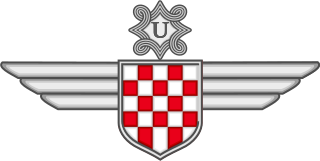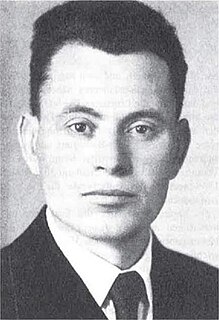 W
WSchutzmannschaft Battalion 118 was a Schutzmannschaft auxiliary police battalion (Schuma). The core of the Schutzmannschaft battalion 118 consisted of Ukrainian nationalists from Bukovina in Western Ukraine. It was linked to the ultra-nationalist Organization of Ukrainian Nationalists, to its smaller Melnyk wing. 900 members of The OUN in Bukovina marched towards eastern Ukraine as members of paramilitary Bukovinian Battalion. After reinforcement by volunteers from Galicia and other parts of Ukraine, the Bukovinian Battalion had a total number of 1,500–1,700 soldiers. When the Bukovinian Battalion was dissolved, many of its members and officers were reorganized as Schutzmannschaft Battalions 115 and 118. Among the people incorporated into the Schutzmannschaft Battalions 115 and 118 were Ukrainian participants in the Babyn Yar massacre.
 W
W29th Waffen Grenadier Division of the SS “RONA” was a collaborationist formation composed of Soviet nationals from the territory of the Lokot Autonomy in Axis-occupied areas of the RSFSR in the Soviet Union during the German–Soviet War of 1941−45.
 W
WAntonio Caggiano was an archbishop and a cardinal of the Roman Catholic Church in Argentina. He played a part in helping Nazi sympathisers and war criminals escape prosecution in Europe by easing their passage to South America.
 W
WThe Croatian Air Force Legion, or HZL, was a unit of the Luftwaffe, composed entirely of volunteers drawn from the nazi puppet-state, the Independent State of Croatia. Many of them had previously served in the Yugoslavian Air Force in April 1941 during the Nazi invasion. The legion fought on the Eastern Front between 1941–1943 during the Second World War. It was then absorbed by the Air Force of the Independent State of Croatia and its surviving members fought back on Croatian soil. The legion had approximately 360 officers, NCOs and men.
 W
WThe Germanic SS was the collective name given to paramilitary and political organisations established in parts of German-occupied Europe between 1939 and 1945 under the auspices of the Schutzstaffel (SS). The units were modeled on the Allgemeine SS in Nazi Germany and established in Belgium, Denmark, the Netherlands, and Norway whose populations were considered in Nazi ideology to be especially "racially suitable". They typically served as local security police augmenting German units of the Gestapo, Sicherheitsdienst (SD), and other departments of the German Reich Main Security Office.
 W
WThe HIPO Corps was a Danish auxiliary police corps, established by the German Gestapo on 19 September 1944, when the Danish civil police force was disbanded and most of its officers were arrested and deported to concentration camps in Germany. The majority of HIPO members were recruited from the ranks of Danish Nazi collaborators. The word HIPO is an abbreviation of the German word Hilfspolizei.
 W
WThe Holy Cross Mountains Brigade was a tactical unit of the Polish National Armed Forces established on 11 August 1944. It did not obey orders to merge with the Home Army in 1944 and was a part of the Military Organization Lizard Union faction. Its soldiers fought simultaneously with the Nazi German and the communist underground.
 W
WThe Volga-Tatar Legion or Legion Idel-Ural was a volunteer Wehrmacht unit composed of Muslim Volga Tatar, but also included other Idel-Ural peoples such as Bashkirs, Chuvashes, Mari people, Tatars, Udmurt people, and Mordva.
 W
WJosef "Sepp" Janko was a Volksgruppenführer of the Danube Swabian German Cultural Association in Yugoslavia in 1939, and later was appointed SS Obersturmführer during World War II.
 W
WRichard Johann Kuhn was an Austrian-German biochemist who was awarded the Nobel Prize in Chemistry in 1938 "for his work on carotenoids and vitamins".
 W
WThe Light Transport Brigade was a military unit of the Independent State of Croatia's Croatian Home Guard which fought alongside the Royal Italian Army on the Eastern Front. It was attached to the 3rd Cavalry Division of the 8th Italian Army, which was in turn subordinate to the German Army Group B.
 W
WThe Nachtigall Battalion, also known as the Ukrainian Nightingale Battalion Group, or officially as Special Group Nachtigall, was the subunit under command of the German Abwehr special operations unit Lehrregiment "Brandenburg" z.b.V. 800. Along with the Roland Battalion it was one of two military units formed February 25, 1941 by head of the Abwehr Wilhelm Franz Canaris, which sanctioned the creation of the "Ukrainian Legion" under German command. It was composed of volunteer "Ukrainian nationalists," Ukrainians operating under Stephan Bandera's OUN orders.
 W
WNon-Germans in the German armed forces during World War II were volunteers, conscripts and those otherwise induced to join who served in Nazi Germany's armed forces during World War II. In German war-time propaganda those who volunteered for service were referred to as Freiwillige ("volunteers"). At the same time, many non-Germans in the German armed forces were conscripts or recruited from prisoner-of-war camps.
 W
WThe Serbian Volunteer Corps, also known as Ljotićevci (Љотићевци) after their ideological leader Dimitrije Ljotić, was the party army of Zbor and collaborationist anti-Partisan military formation that was raised in the Territory of the Military Commander in Serbia during World War II. In July 1941, a full-scale rebellion by the communist Yugoslav Partisans and the royalist Chetniks erupted in the territory. The Germans pressured Milan Nedić's collaborationist government to deal with the uprisings under the threat of letting the armed forces of the Independent State of Croatia, Hungary, and Bulgaria occupy the territory and maintain peace and order in it. It was absorbed in the Waffen-SS in 1944 after evacuating to Slovenia, and in 1945 was rechristened the Serbian SS Corps.
 W
WCzeslaw Sokolowski was a Polish Roman Catholic priest, theologian, rector of the Catholic University of Lublin in 1924–1925, and at the Faculty of Catholic Theology at the University of Warsaw. He was auxiliary bishop of Siedlce from 1919 to 1940, titular bishop of Pentacomia and apostolic administrator of the diocese of Siedlce in the years 1940–1946. He was also considered to be a Nazi collaborator.
 W
WSonderabteilung Lola was an independent group under the German Sicherheitsdienst in Trondheim, KDS Drontheim Referat IV. The Sonderabteilung consisted of around known 50-60 Norwegian informants who worked for Henry Rinnan, many of whom were former frontline soldiers in the Waffen SS. This group was not known to the vast majority of Norwegians, including the members of the Nasjonal Samling party, until after the war.
 W
WTrawniki men were Central and Eastern European collaborators recruited from prisoner-of-war camps set up by Nazi Germany for Soviet Red Army soldiers captured in the border regions during Operation Barbarossa launched in June 1941. Thousands of these volunteers served in the General Government territory of German-occupied Poland until the end of World War II. Trawnikis belonged to a category of Hiwis, Nazi auxiliary forces recruited from native subjects.